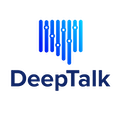The decade began with a wave of codeless AI platforms. More and more corporations and midsize companies are looking to harness the power of artificial intelligence and its models to create more user-friendly software products with superior UX. These SaaS tools offer the same computing power as AI giants such as Google and Apple, but without the need for programming skills.
By 2024, up to 65% of application development will be done on no-code or low-code platforms, according to a Gartner Magic Quadrant report. However, implementing these models becomes a hurdle for many. It becomes very difficult for startups to find qualified people with machine learning backgrounds. Companies that invest fortunes in hiring Data Scientists and Ph.D. Engineers, many with academic research and machine learning experience, fail to launch their products.
This is where visual tools without code come into play, which helps fill the data scientist gap and makes artificial intelligence less intimidating for not-so-technical people.
Companies can now generate Datasets, train and deploy models with minimal or no coding knowledge in much less time while still being cost-effective. Developers do not need to have a Ph.D. in AI and can be more creative with the data and models they wish to train.
In the following sections, we will look at some of the best codeless machine learning tools available right now. Each of them excels at something different and will help you bring your AI-powered application ideas to life.
1 Deep Talk | With just a few clicks Deep Talk offers the ability to classify, categorize and detect the most relevant topics with up to 3 levels of depth that appear in your conversation data extracted from different sources such as intercom, Hubspot, zendesk, Gmail, etc. It has Deep Learning models that allow you to classify topics, cluster conversations, analyze general text data, surveys, e-mails, or chats with unsupervised and supervised DL models. Its user-friendly platform guides the user step by step in the configuration of the models without a single line of code. It has several hiring plans according to the number of conversations that need to be processed. Its graphical visualization is one of the most sophisticated in the market.
2 MonkeyLearn | MonkeyLearn offers a set of powerful artificial intelligence and machine learning tools without code to analyze text from internal CRM systems, social networks, emails, documents, online reviews, and more. MonkeyLearn’s tools provide real-time analytics for immediately actionable insights and data-driven decisions. MonkeyLearn is fully scalable and you can implement pre-trained models immediately or train your own for your specific needs and criteria, usually in just a few steps.
3 Google AutoML | Google AutoML allows users to harness the power of artificial neural networks to create effective predictive models with regular image and text data, and integrations with Google Sheets, Google Slides, and more make it easy to get started. AutoML runs in the cloud, so you don’t need any infrastructure to get started. Google’s advanced analytics offer image classification, NPL analysis, AutoML translation, and computational insight. Google’s extensive experience with ML models means that their pre-trained models can often be used out of the box, and their UX makes training custom models relatively straightforward for the uninitiated in AI.
4 Create ML | Built on macOS with the same machine learning architecture as Apple Photos and Siri, Create ML’s machine learning platform is ideal for regular Apple users because it can be easier and faster to train natural language processing (NLP) and image classification models with their data. that is already stored on their Mac or in Apple’s cloud. Drag-and-drop tools make it easy to train models, and you don’t need to be an iOS developer to tweak metrics and make your AI work for you. Real-time data validation allows you to check the progress of your training in a non-technical way, and once it’s trained to your liking, you can integrate it with iOS apps right away.
5 Obviously AI | Obviously aims to move users from data collection to machine learning analysis in just a few clicks: upload a CSV file, choose the data analysis you need, and see your results immediately, including answers to direct questions using NLP and NLU (natural language processing and understanding). This tool promises to find the right algorithm for any use case, so training is simplified and models can be put to use immediately, although the level of customization may be a bit lower than on other platforms. However, its what-if scenarios can display useful information within minutes of starting, ideal for non-programmers.
6 BigML | BigML is a consumable, programmable, and scalable machine learning platform that facilitates the resolution and automation of classification, regression, time series prediction, cluster analysis, anomaly detection, association discovery, and topic modeling tasks. BigML helps analysts, software developers and scientists solve “end-to-end” machine learning tasks, seamlessly transforming data into actionable models that are used as remote services or, locally, embedded in applications to make predictions.
